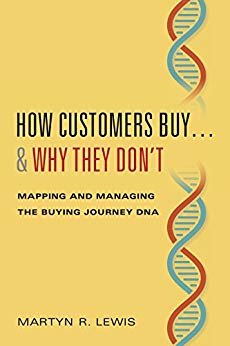A business usually starts with an idea, often an entrepreneur with an idea. They may not think of themselves as an entrepreneur, but nevertheless someone somewhere comes up with something, an offering that they believe the market needs. And then, usually with unbounded passion, they jump in and start a business. And in more than a few cases, they actually do connect with potential customers and thus a business is born. However, the sad fact is that the vast majority of such business acorns never really gain the market traction they likely deserve. These entrepreneurs will often exhaust their energy, and in some cases their finances, in an elusive pursuit to find customers. And if they hadn’t already figured it out, they soon realize that creating a customer is indeed the #1 challenge for just about any business—a healthy stream of customers that will provide the very lifeblood for the business.
To understand how to solve this challenge, let’s look at what it takes to create a customer. And let’s start with some tough talk by blowing away the biggest myth out there—that it all starts with a superior offering. You may have an offering that you believe people can’t live without. But guess what, they can. You may have an offering that will clearly and unarguably save organizations money. This guarantees nothing. It takes far more than a great offering that will deliver value to actually create a customer.
At this stage you may well be thinking that this doesn’t make sense. How could a potential customer turn away from buying something that is so good for them? And you would not be alone in that thinking. From startups to giant corporations, many fall foul to thinking that if you can gain awareness for your offering in the marketplace and show the value of investing in it, then only a fool wouldn’t buy. This myth then leads to the very faulty thinking that if the market isn’t buying, all you have to do is to focus on how to better position your offering and how to better prove the value.
Well, here’s the tough love—you’d be solving the wrong problem. Because our research has shown that the vast majority of customers actually do “get it”, they understand the value of the offering, they believe the ROI benefits to be had, and yet they still don’t buy. They are seemingly quite happy to walk away from countless offerings which on closer inspection would actually represent very real value, quality and user satisfaction.
Because the issue here is not what they buy, it’s how they buy. Today’s buyers, whether it is you or your prospective customer, live in a very different world than they used to. Thanks to technology and a number of socioeconomic trends, customers are buying very differently in today’s world, and it’s vitally important to understand why. Here are three notable changes we have seen in buying.
Abundance: Buyers today have quite literally, a virtually infinite choice of how to invest their time and resources on how and what to spend their money. They are at the same time inundated with a constant flood of incoming sales and marketing messages. To cope with this, most people have learnt to just turn the noise off.
Fully Deployed Resources: Most customers have already chosen what they want to do, what they want to buy, and who they want to buy from. They aren’t waiting, cash in hand so to speak, for yet another great idea, product or service. Their bets have all been placed.
Change Adversity: Although we have been talking about change for decades and calling it the new normal, most buyers don’t like change. Part of this change adversity is that they simply don’t have time to evaluate new offerings and learn new habits.
Working against the entrepreneur in all of this is that they can often trivialize or are even blind to what they are actually asking their buyer to do. To use another example, perhaps you are selling a revolutionary new printer that hooks via Bluetooth to your desktop and prints faster and uses much less ink. A no-brainer it would seem. You can show what they will save in ink and demonstrate the superior speed. Only a fool wouldn’t buy. But let’s stop and take a look at what the buyer could be thinking.
- Last time I bought a new printer it took days to get the driver to work. I don’t want to go through that again
- Yes, sure this is a better printer, but there is always someone with a faster, better printer
- What do I do with the ink cartridges I still have for my old printer
- The input screen looks kind of complicated
- I like the way my old printer looks on my desk
- My four-year-old has just learnt how to use my printer and it may be tough for him to learn the new one
- I like the way I can take the card out of my camera and put it in my printer and simply print my pictures
- I’d like to buy this new printer, but I just bought that new touch screen
- Well, it’s the printer or those new shoes
- Not sure I need a faster printer
- Perhaps I’ll just wait as my current printer is good enough
And the list goes on. In this case, if the printer isn’t selling and we take the usual route of reiterating the benefits to our prospects, how many of these concerns go away? None. Now, every so often you will find someone who thinks “Yes, it’s worth it. Never mind my concerns. My old printer is dying anyway and it’s tough to find ink for it now, so let’s buy it.” But take note because they aren’t buying because of any great selling or marketing, this is a different market; a market that is typified by those using old printers with ink cartridges that are hard to find. Just because you can sell to prospects in this market doesn’t imply you can sell to others whose current printers are working just fine.

This approach opens the lens from a myopic pinhole focused simply on the offering and its associated benefits, to a wide-angle panorama of understanding the entire Customer Buying Journey. When this picture is fully unveiled, insights often appear as to exactly why prospective customers may stall or stop in their buying journey. It is not without irony perhaps, that our research shows it is invariably more productive to focus on removing the barriers to acquisition, rather than on reinforcing the benefits.
Find a Home-Based Business to Start-Up >>> Hundreds of Business Listings.














































